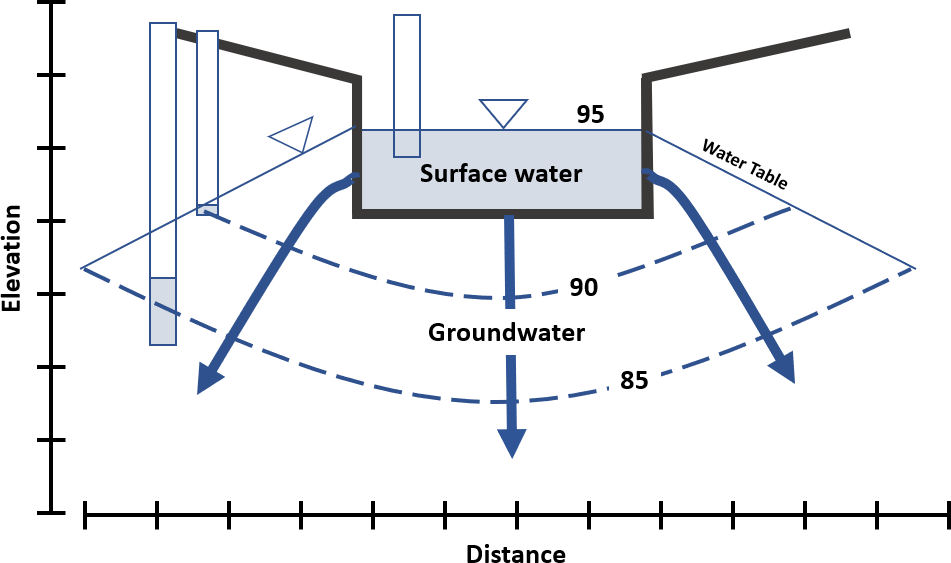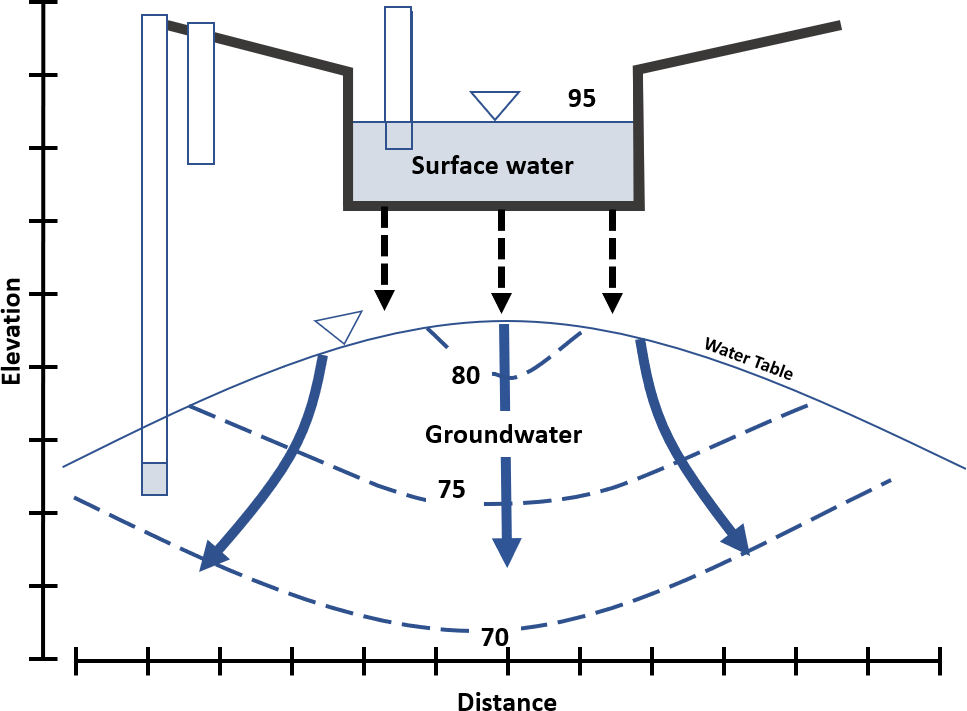1.3 Influent or Surface Water Losing Conditions
Influent conditions require the surface-water stage to be higher than the underlying and adjacent water table. There are two general scenarios when this occurs: 1) the water table remains hydrologically connected to the stage and slopes away from the feature (Figure 5), or 2) the surface-water feature is separated from the groundwater system by a vadose zone (partially saturated) (Figure 6). In both settings, the groundwater is recharged by surface water. Under these influent conditions, a volume of surface water over a specified time interval is lost to the groundwater (losing conditions). Representative monitoring wells illustrate that water levels in wells finished at multiple depths adjacent to or beneath the influent stream, lake or wetland are lower than the surface-water stage. Flux rates to groundwater are dependent on the magnitude of the local hydraulic gradient (difference between the surface-water stage and groundwater head), as well as the hydraulic conductivities of the geologic sediments and of the banks and bottom of the surface feature. The surface-water stage reflects the elevation of the local water table when the water table is connected to the feature. Representative water levels in monitoring wells are lower than the stage. However, when water percolates through a vadose zone (partially saturated sediments) the surface-water stage is disconnected from the water table (Figure 6). Depending on the leakage rate and the hydrologic properties of the saturated sediments, the water table beneath the source area may become higher than the surrounding area, mounded as shown in Figure 6. When leakage rates are low and/or aquifer hydraulic conductivities large, mounding may not be observable.


